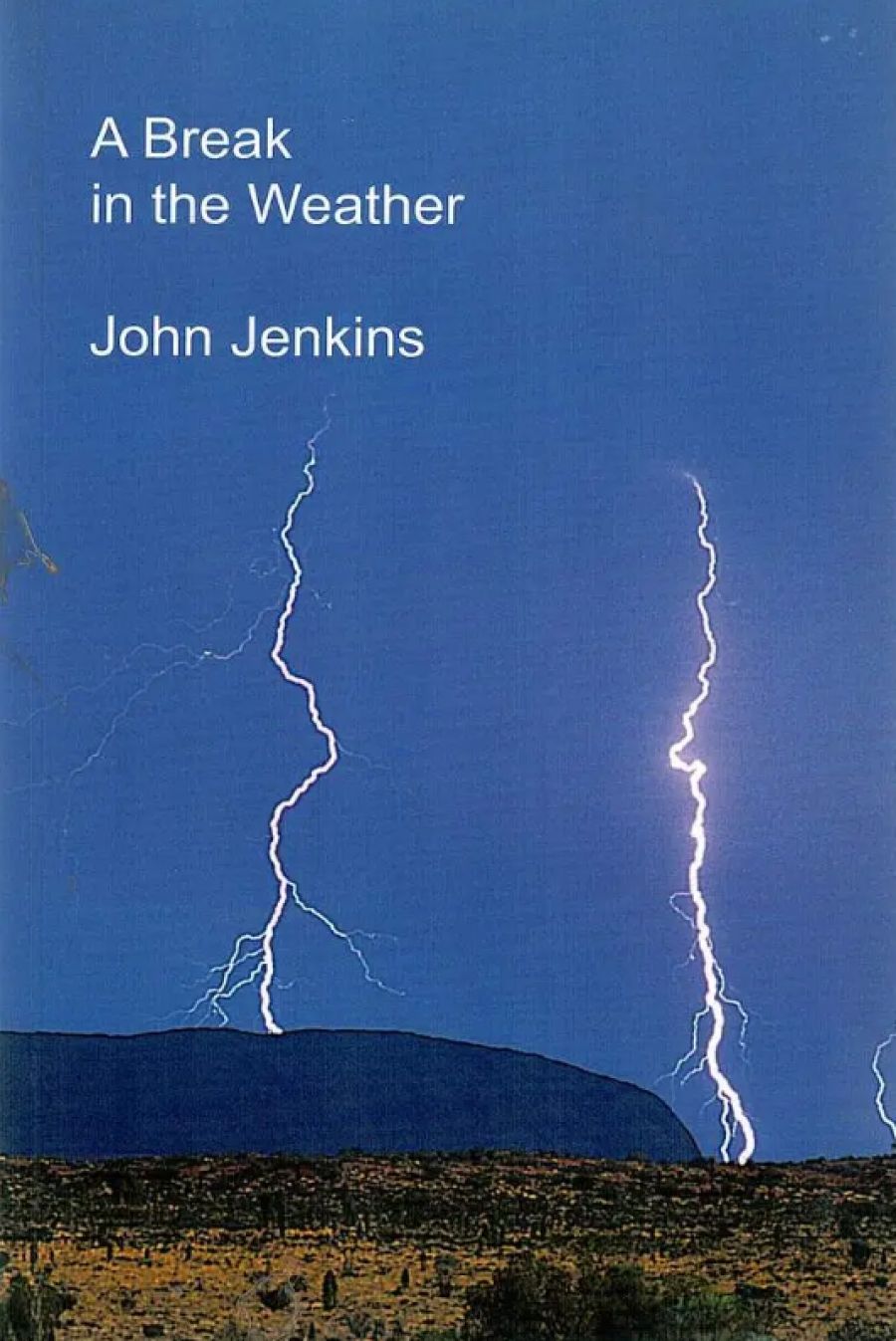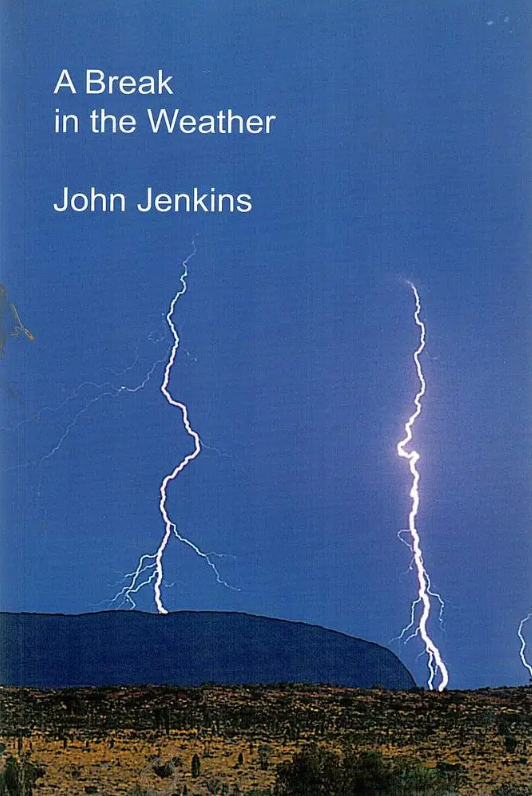
- Free Article: No
- Contents Category: Poetry
- Review Article: Yes
- Article Title: Dwelling on the Weather
- Online Only: No
- Custom Highlight Text:
At a time when publishers of poetry in Australia are light on the ground, the verse novel as a form appears to be, at least comparatively, a growth industry. The Australian poetry scene has been blessed on this front in recent years, with the sticky-as-sex efforts of Dorothy Porter (The Monkey’s Mask and Wild Surmise), the curious-noir of John Tranter (The Floor of Heaven) and the boots’n’all myth-building of Les Murray (Fredy Neptune). This penchant for a prosey poesy has by no means been limited to our shores, Vikram Seth and Anne Carsons being prime examples. Similarly, the most stunning verse novel of recent years, W.G. Sebald’s After Nature, is a testimony to the force and suppleness of the form.
- Book 1 Title: A Break in the Weather
- Book 1 Biblio: Modern Writing Press, $19.95 pb, 96 pp
- Book 1 Cover Small (400 x 600):

- Book 1 Cover (800 x 1200):

With A Break in the Weather, John Jenkins offers us such a beast. At a mere ninety-six pages, this verse novella man-ages to compress a great deal of information into its 252 octaves. Jenkins adopts and adapts the ottava rima common to Ariosto’s Orlando Furioso and Byron’s Don Juan for his tale of global warming, mixed-race relations and bastard meteorologists. His use of the octave and his light touch with the clinging couplet, rather than weighing the book down with balladish doggerel, lend the narrative, as he states in the notes section, a ‘punchy, clock-like regularity’ that carries the narrative along. The versification saves the novel; the reader is pushed along at points where plot and characterisation otherwise falter.
Take for example Miko Tanaka: the love interest. The novella purports to be, at least in part, the story of a romance. Bruce meets Miko on holiday at Uluru. She is a Japanese ‘wunderkind’ physicist and a self-styled adventurer straight out of Tokyonese pop culture:
‘I am very rare – to be Japanese, yet go
alone. We always travel in a group. But I’m
like “Adventure Girl”, a cartoon. (Do you have it?)
– as seen on Tokyo TV! I am very fit
‘And have designer pack and walking shoes. Yes. Miko. Adventure Girl. Same as on the screen.’
Miko as Manga-like animée is worryingly convincing. The presentation of Miko’s character as just so much Asian exotica is at times not simply problematic but offensive. Moving from the naïf-beat of ‘It was a sort of zen thing on both their parts’, the unravelling of Bruce and Miko’s romance reaches curious, if not ludicrous, lows with Miko’s revelry on the ‘[r]ound eyes of Western man’ and Bruce’s generous claim her ‘eyes inscribed, so neatly, / more than an aesthetic of oriental beauty’. Lucky she’s just a cartoon. While Jenkins may be attempting to address cultural difference, and by extension to underscore our commonality as a species, the results remain very much attuned to the white Australian midland.
An equally thick brush is used on the villain of the piece, Imre Nero. If the family name and the cigarette smoking didn’t give it away, the fact that the corporate employer is housed on the North Shore in ‘a tower of black glass … as smooth and as beautiful as a Stealth Bomber’ would. Nero is Bruce’s sparring partner, though they only really spar once over drinks during a conference, to little effect. Bruce is a somewhat self-conscious and lacklustre interlocutor, not much of a hero, and the bout is broken up by the arrival and doomsday sermonising of the avuncular Dr Kato.
And the plot? Finally, not very much, though there is a beginning, middle and end. The characters are thrown together, only to bounce off each other into set pieces on the weather and the fate of the planet, or else to perform impressive sexual gymnastics, escape a bushfire or almost discover the secrets of their family tree. A Break in the Weather is a picaresque tale drawn from the natural sciences conference circuit, rather like Tom Jones co-written by Paul Davies and James Gleick. The love story offers fuel to a plot that finally seems little more than a makeshift vehicle for a prolonged and well-researched weather update. Jenkins’s use of an epigraph taken from John Ashbery (‘All poetry is really about the weather’) is to the point. The reader should not be fooled. In the end, it is the weather that matters.
Jenkins offers a smorgasbord of scientific information turned to verse. Take, for example, clouds and pressure systems in Verses 81-85. The scientific knowledge Jenkins disseminates gains a vibrancy (if not poetry) sadly denied his characters. Weather balloons, Chaos theory, relativity, Heisenberg’s uncertainty principle, El Niño, symbiotic marine colonies, the Gulf Stream, the nomenclature of clouds, the Cretaceous and Permian catastrophes, global climate change, Critical Threshold Events and alternative energies, among much other data, form the backbone of the novella. Rather than a plot per se, Jenkins pushes the reader toward a realisation that a major part of the threat facing the planet is a general failure actually to imagine the catastrophe we have nurtured. Within this strange coupling of science and poetry, this key point evolves quite naturally: it is not enough simply to know; we must also imagine what is being done to the earth and an alternative scenario for our children (Bruce and Miko aptly name their firstborn Miranda).
Towards the novella’s end, Bruce offers an almost Aristotelian summation of the work of art as ‘a sense of being brought to a complete and adequate expression’. For all its various shortcomings, A Break in the Weather successfully achieves just so much.


Comments powered by CComment